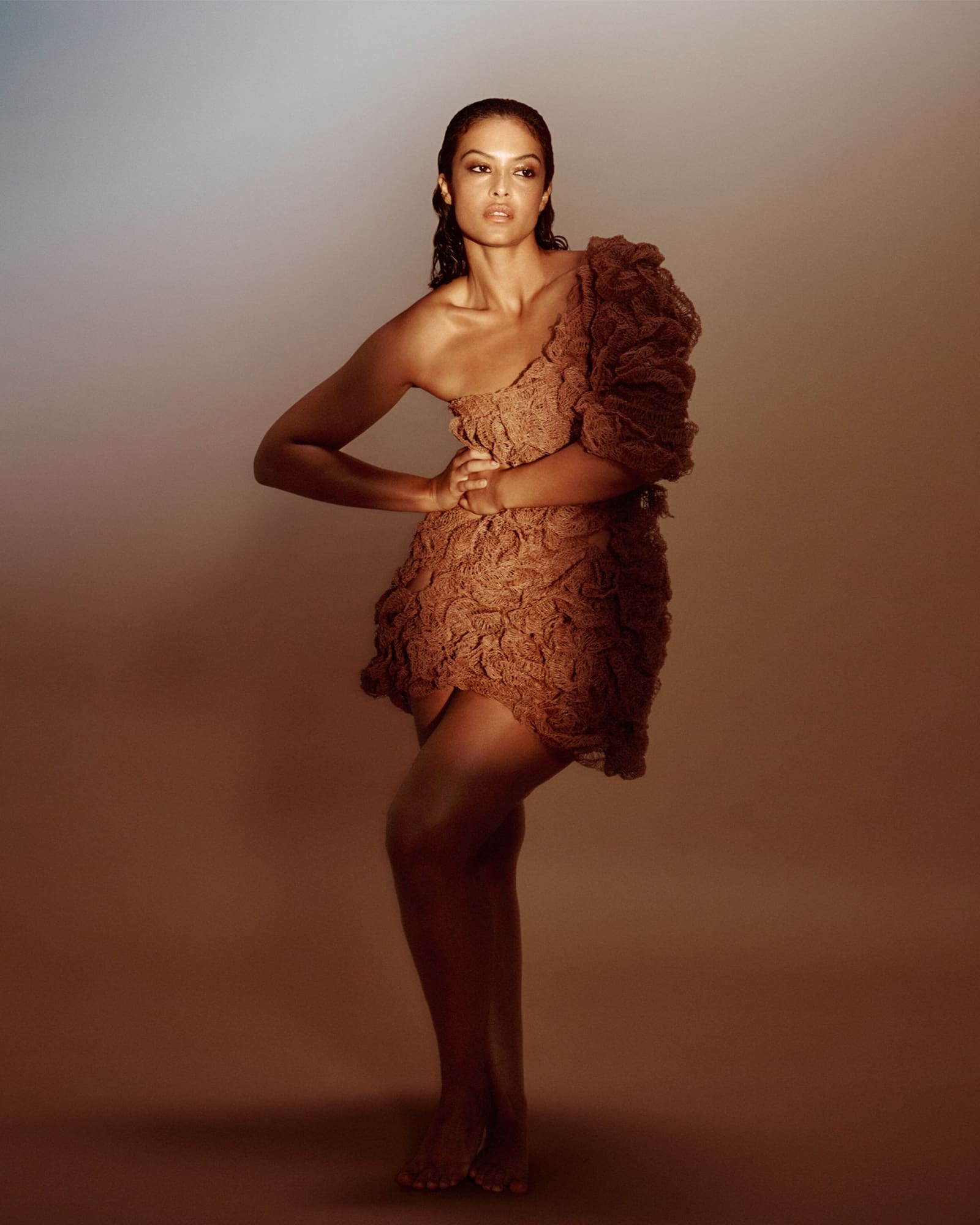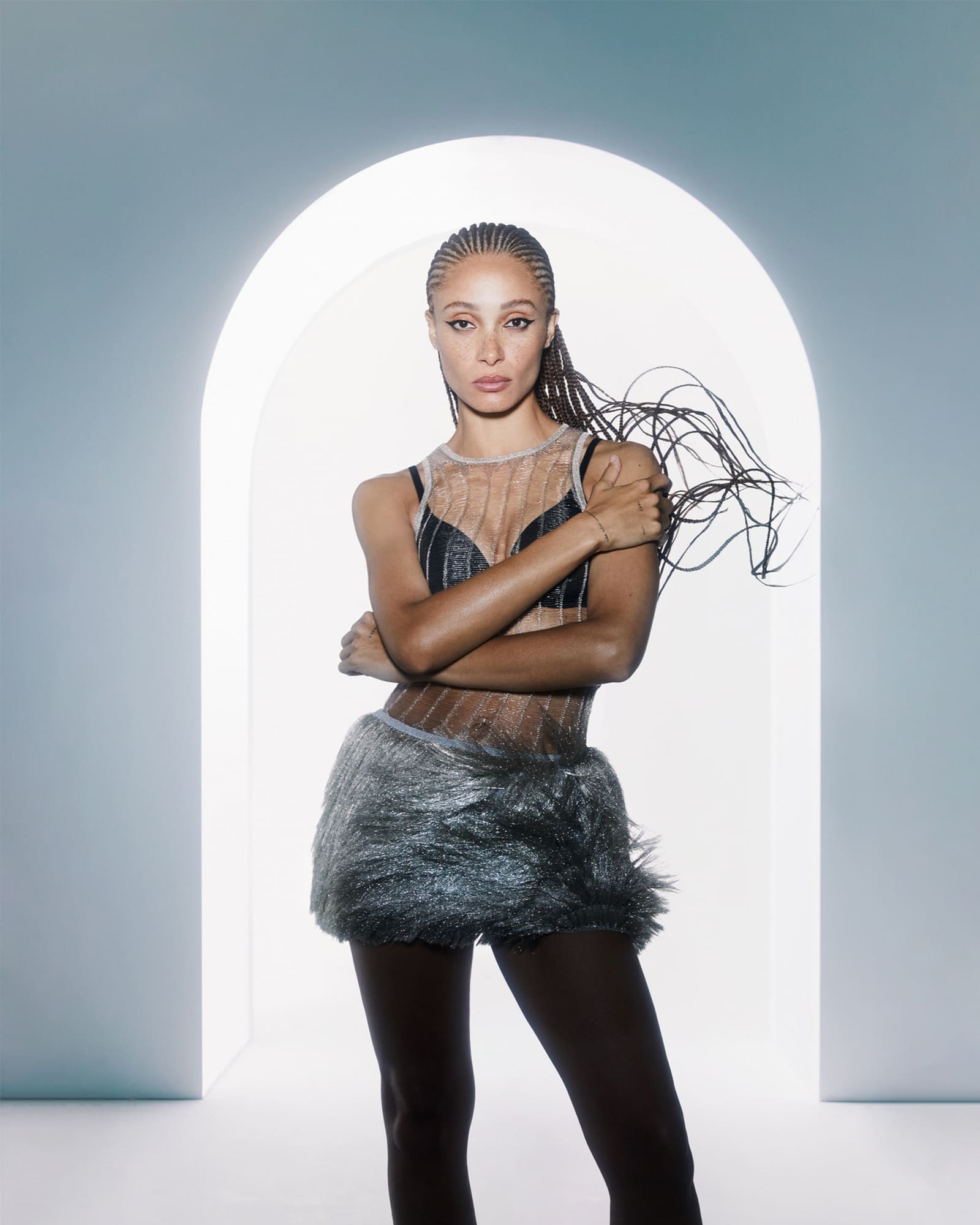Photo by Sofia Malamute/ Courtesy of Victoria Secret
Photo by Sofia Malamute/ Courtesy of Victoria Secret
One of the most buzzed-about happenings coming this fall is the reveal of Victoria’s Secret Version 2.0. Like so many other things from the aughts, the legendary Victoria’s Secret show is making a comeback, this time in the form of a feature-length documentary the brand has dubbed The Tour. The film chronicles the coming together of 20 creatives from four cities around the world—Bogotá, Lagos, Tokyo, and London—and the ways in which they all create their own mini versions of the Victoria’s Secret experience.
Among the many musicians, artists, dancers, and choreographers, the lingerie giant also reached out to fashion designers in each city and gave them carte blanche to design a special collection to be featured in the film. Ahead of the final unveiling on September 26, we spoke to each of the designers at the Victoria’s Secret store on Fifth Avenue about their work, and what it means for them as designers, and as representatives of their culture, to take part in the next evolution of the brand.

Melissa Valdés Duque
Growing up in Medellín, Colombia, the 24-year-old artist and designer Melissa Valdés Duque, viewed Victoria’s Secret as something that was far removed from who she was—both as a person, and where she was from. “It’s something super dreamy,” she said in Spanish of being asked to participate. “It’s so beautiful to represent not only my country, but all the people who speak Spanish; the young women and all the creative women in Latin America, which is super important.” In her artistic practice she often mixes traditional crafts with unexpected materials, like the cream crochet dress with cutouts that she created for VS20. Although upon first glance it brings to mind a classic body-con beach dress, it was inspired by Valdés Duque’s mother, who had to undergo surgery. “My work is unconventional, but I am inspired by personal and family stories,” she said. “My mother had several tumors in her neck removed; and I started looking into crochet, which was something that the women in my family always did.”
That she can create such beautiful objects from such a dark place speaks to modern conversations about beauty and bodies. “A few years ago, everything was about being perfect and, for me now, the most beautiful thing is to show how imperfect you can be with your body or who you are; to show that you can be free in your own skin.” She adds, “And that’s the beauty for me of this new version of Victoria’s Secret.”

Bubu Ogisi
Bubu Ogisi, who launched her womenswear label IAMISIGO in 2013, is interested in processes and the way her fabrics and materials come together. “I’m a fiber artist and a researcher,” she explained. “My work has to do with ancient ancestral cultural preservation and techniques, and also introducing new ideas into the preservation of weaving and craft and other processes that exist across the African continent.” So, you can imagine her surprise when Victoria’s Secret reached out. “My first impression was, I don’t make lingerie,” she said laughing, “but I guess it’s a really cool new strategy and idea, and I thought it was a cool way to show people my process and what I do and how I create.”
Take the brass dress that Naomi Campbell wears in the campaign, which is made from hand-cut metal sourced in Kenya and later assembled between Kenya and Nigeria. Ogisi is Nigerian, but she is keen to emphasize that her work highlights the creative traditions of the whole continent. “I was supposed to represent Nigeria, but I chose to represent the continent because that’s how I work.” She continued: “I wanted to show everyone what’s made in different parts of Africa, but also how that is also brought together in Nigeria.” A bikini top and matching skirt made from embroidered cowries on woven cotton began with the collecting of the shells on the beaches of Tanzania, Kenya, and Nigeria, where the cotton was also sourced from. “I wanted to inject this idea of spirituality into the collection, which is inspired by Yoruba mythology and cosmology.” She added: “It’s wearable art.”

Supriya Lele
Supriya Lele founded her namesake label in London in 2017 and quickly made a splash on the scene. Dua Lipa and Rihanna have both worn her clothes and, in 2020, she was an LVMH Prize finalist. Still, she was not prepared to receive an email from Victoria’s Secret inviting her to participate in this year’s production. “I was sort of unsure, given the brand’s previous kind of history, but I also understood that something new was afoot,” she said. “And it felt like a really exciting opportunity.”
She zeroed in on the element of fantasy right away. “The shows were the really famous thing that stood out in my memory, and I remembered them for being extremely fantastical.” She was excited to work with materials that she isn’t normally able to do at her own label. “We had full creative freedom, but what was really lovely was to be able to manufacture more artisanal things that aren’t necessarily commercial,” she explained. Her hand-draped pieces are decorated with 3D-printed “snake” accessories, like a white jersey dress with a bronze snake that wraps all around the stomach. “We were looking at classical Indian sculpture, and I wanted these pieces to feel like a museum artifact but something very modern at the same time.”

Jenny Fax
The designer Jen-Fang Shueh from the Tokyo-based label Jenny Fax may seem like an unorthodox choice to collaborate with Victoria’s Secret, but considering her work derives much inspiration from the teen girl experience, it’s actually perfect. “My designs are based on my memory of childhood but also ordinary womankind,” she explained. “I call it the ‘gray zone’; it’s a girl who is not really extreme in class, she’s not super popular, she’s the in-between girl.” She added: “She’s my muse because most girls are like that, and I find them really charming, also because I am one of them.”
Shueh founded her label in 2010 and remains one of the pillars of subculture fashion in Tokyo. “When Victoria’s Secret reached out, I was really flattered because they’re a major brand, but I was also really surprised.” When it came time to work on the actual pieces, she found that she wasn’t so much interested in her “gray-zone girl.” “I realized I wanted to put myself in front, like a 43-year-old woman, to show how different the body is, how things change when you grow.” One of her pieces is a sculptural short-sleeve velour dress that she molded on her own torso. “I’m a size 44, and normally the sample size is 36, so this is kind of a joke like, ‘okay, in this world, we start from my size.”
Another look, pieced together from black lace bras and panties, had a surprisingly straightforward approach. “I was doing research on their online store—because the image is mainly the angel—and I found their product actually really cute.” She adds, “I didn’t want to just make everything from zero, so when I saw that I liked their pieces I decided to use them to create a new shape.” She added: “I hope we can make a new Victoria’s Secret to spread this message that this is for all types of women, that all types of women can be spoken to.” Hear ye, hear ye, popular girls and gray-zone girls! This Jenny Fax is for you.
This article was originally published on Vogue.com
